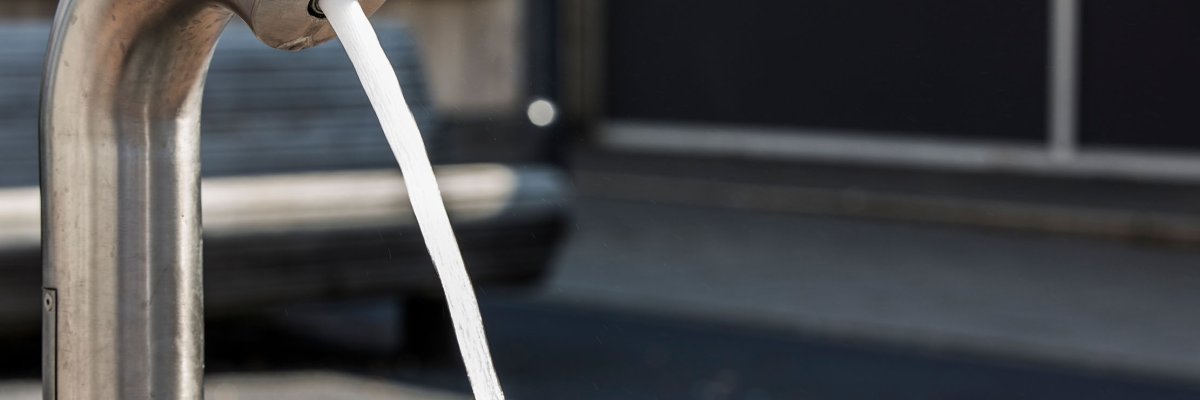Legionella
Legionella
Legionella are bacteria that are present in low concentrations in groundwater. From there, they can also enter the drinking water installation. They find ideal living conditions in temperature ranges between 25 and 45° C. Stagnant water, e.g. due to infrequently used or oversized drinking water pipes, also favours the multiplication of legionella. The legionella in the water only die slowly from 55° C, while temperatures above 60° C (sometimes only from 70° C) are usually not survived.
If inhaled as an aerosol - for example when showering - the legionella bacteria can lead to severe pneumonia, so-called legionellosis. The milder form of infection is called Pontiac fever. The current Drinking Water Ordinance includes a number of testing obligations, including the obligation to test drinking water for legionella. Since November 2012, water from water heating systems must be regularly tested for legionella.
Who is required to undergo an examination?
On the one hand, there is an obligation to test certain water heating systems that are operated in rented buildings (so-called commercial use). Furthermore, the water from certain systems in buildings with public use must be tested, for example hospitals, swimming pools, fitness studios, hotels and also retirement homes. The landlord or owner of these facilities must have the water regularly tested for legionella.
Which buildings or facilities are specifically affected?
The testing obligation applies to buildings with at least three residential units. In addition, there must be showers or other facilities where the drinking water is nebulised. The water heating system must be a so-called large system with a central hot water storage tank (these are systems in which the storage tank holds more than 400 litres and/or the water volume in the pipe between the storage tank and the last tap is more than 3 litres). One- and two-family houses are generally exempt from the obligation to inspect, even if a large system is present.
How often does an examination have to take place?
In rented buildings, the water must be tested for legionella at least every 3 years.
In the case of large systems operated in the buildings with public use swimming pools, hotels, fitness studios, the water must be tested for legionella at least once a year.Who examines the water?
The owner or landlord must commission a laboratory that is approved for drinking water testing to carry out the tests. The appointed laboratory takes the water samples on site and analyses them.
Do consumers/tenants need to be informed about the investigations?
The Drinking Water Ordinance stipulates that the results of legionella tests must be communicated to consumers/tenants. This can be done, for example, by posting them on the notice board.
What can I do to prevent legionella from multiplying in the hot water system?
Legionella multiply well in a temperature range of about 30-50°C. Above 50°C, the multiplication rate drops significantly. Above 50°C, the multiplication rate drops significantly. A permanent operating temperature of 60°C in the storage tank prevents the reproduction of legionella. Stagnation of the water in the pipes also leads to a higher legionella concentration. You should therefore make sure that the water can flow well in all areas of the drinking water installation. Pipes in which the water is permanently stagnant, i.e. dead pipes, should be avoided or disconnected from the drinking water network.
What has to be reported to the health department?
If the limit value (technical measure value) is exceeded, i.e. if more than 100 legionella are detected in 100 ml of water, the health authority must be informed immediately.
What should be done if the technical action value is exceeded?
If the operator of a large installation becomes aware that the specified technical action value is exceeded, he shall immediately
- carry out investigations or have them carried out in order to clarify the causes (these investigations must include a site inspection as well as an examination of compliance with the generally recognised rules of technology)
- prepare a hazard analysis or have it prepared
- carry out the measures or have them carried out which are necessary to protect the health of consumers in accordance with the generally recognised rules of technology.
The operator of a large-scale facility shall inform the public health authority without delay of the measures they have taken.
The operator and the other owner shall keep records of the measures (according to 3.) or have them kept. They shall keep the records available for ten years after completion of the necessary measures according to sentence 1 number 3 and submit them to the public health authority on request. When implementing measures (according to 2. and 3.), the entrepreneur and the other owner shall observe the recommendations of the Federal Environment Agency. The operator of a large-scale facility shall immediately inform the affected consumers of the result of the hazard analysis and any resulting restrictions on the use of drinking water.At which points are examinations to be carried out and how? How many samples must be examined?
Two water samples must be taken at the storage tank (flow and return) and additionally, depending on the size of the building, samples must be taken in several flats. The number of these samples depends on the number of risers in the system. In addition, the temperature must be measured for each water sample.
